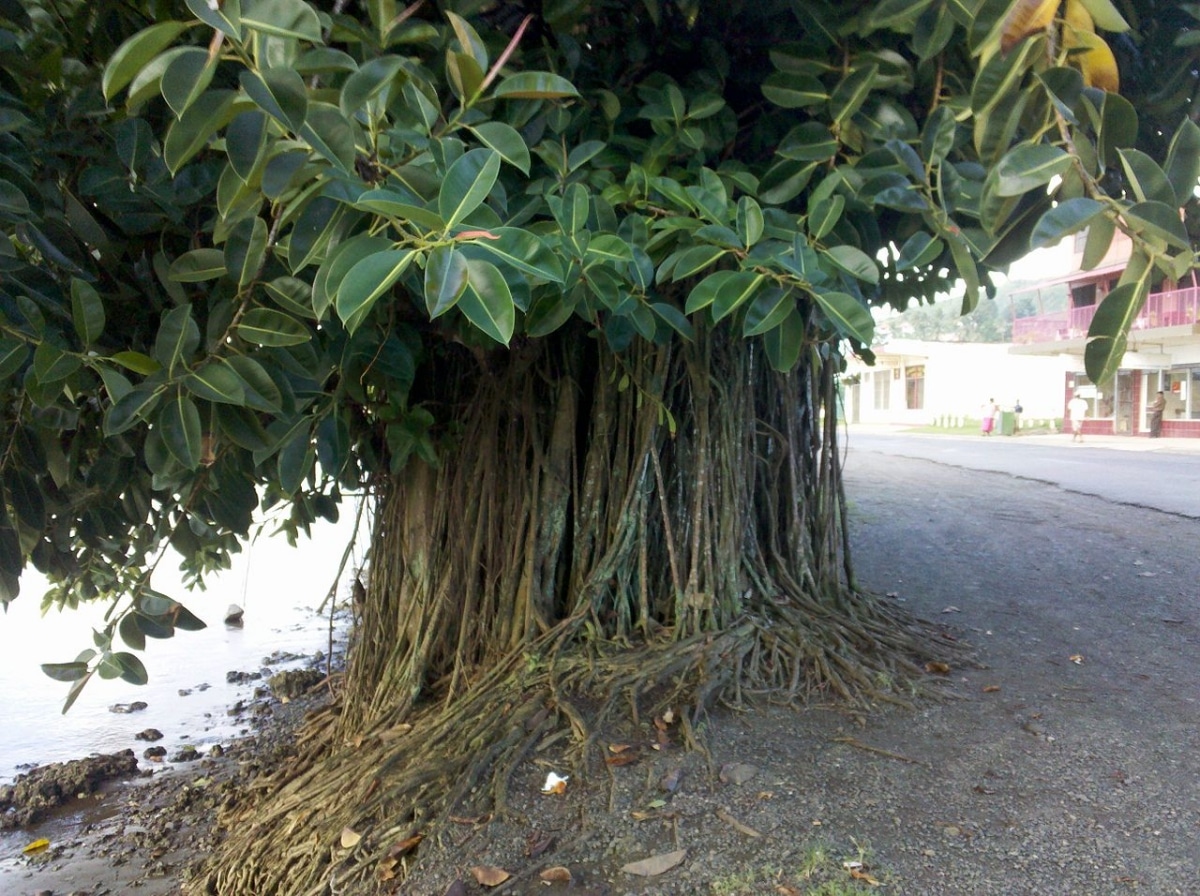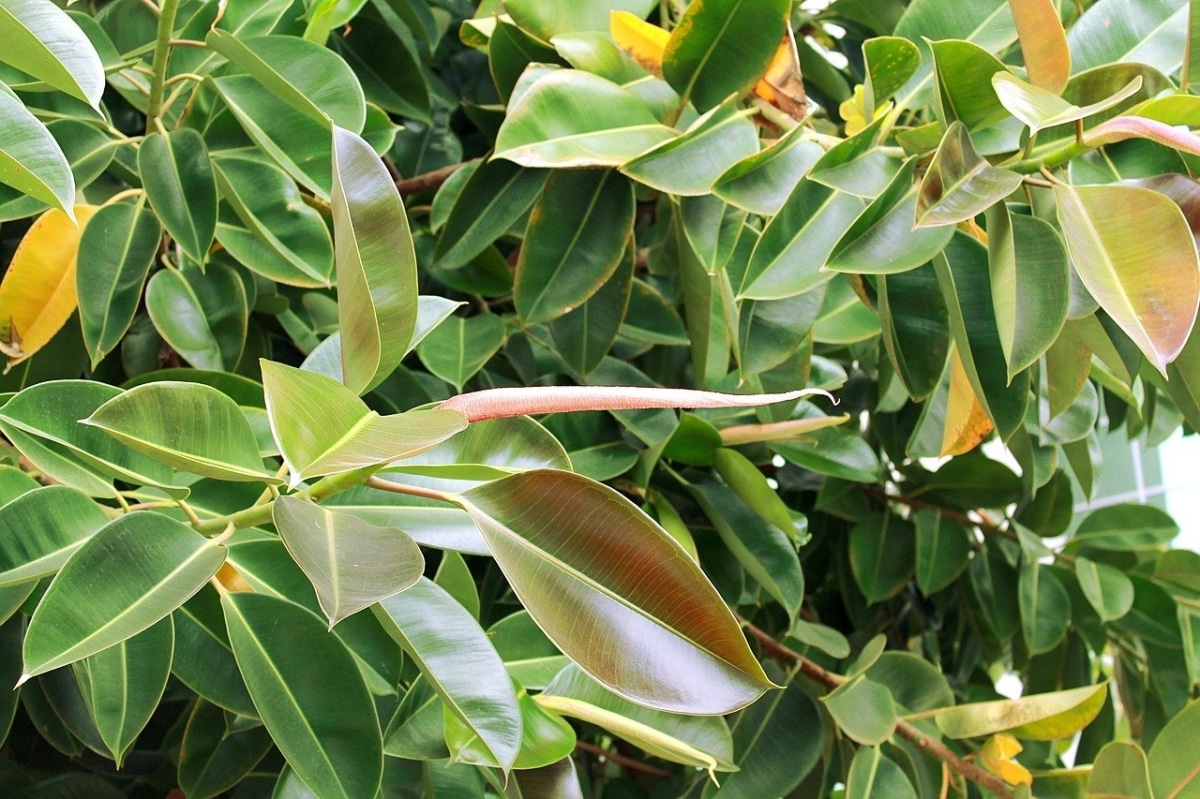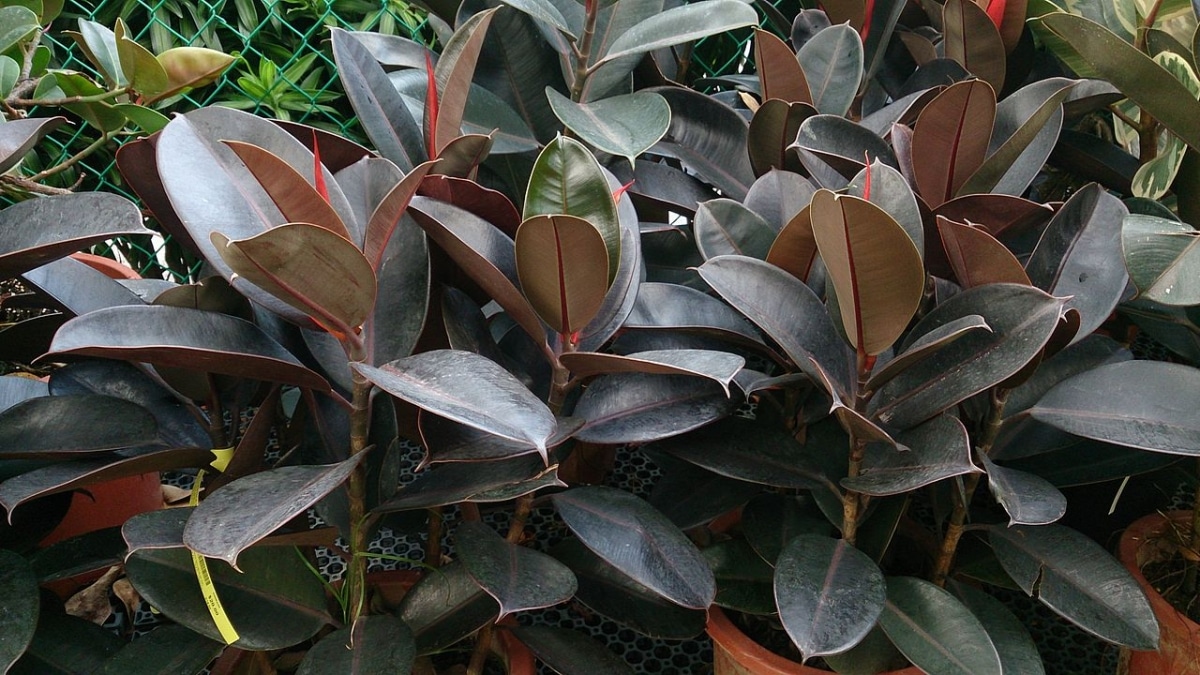
Image - Wikimedia / B.navez
El Ficus elastica It is one of the trees of the genus that we can most easily find in tropical gardens as well as in homes. Although it needs a lot of space to develop normally, it is much loved for the ornamental value that its leaves have, especially, which give an exotic touch to the place.
It tolerates pruning well, although it is not recommended to remove any branch, since its beauty lies precisely in its size, the arrangement of its branches and also in the fact that it remains evergreen.
Origin and characteristics of Ficus elastica

Image - Wikimedia / PseudoscienceFTL
It is a tree known as rubber tree or rubber tree that grows wild in northeast India and Indonesia. Its scientific name is Ficus elastica, and It can reach a maximum height of 30 meters.. The mature trunk measures up to 2 meters in diameter, and has roots capable of extending several meters.
The leaves have a large size, since they measure about 30 centimeters long by 10 centimeters wide. These are oblong or elliptical, shiny dark green, coriaceous, and petiolate (that is, they are joined to the branch by a stem, which is also green).
Blooms throughout the spring, and it does so like all Ficus: producing false fruits called sycones, inside which are the flowers that will be pollinated by the fig wasp. When ripe, it will be a greenish-yellow fig 1 centimeter in diameter.
As a curious fact let me tell you something: The rubber tree begins its life as an epiphytic plant. It has a tendency to use the trunks of other trees as support, and only with time does it grow as a tree. Of course, by then it will have developed aerial roots and buttresses that may have ended the life of the plant that has served as its support. For this reason, it is considered to be one of the Ficus species that 'strangle' other plants.
In addition, There is a variety known as robust ficus, but what is actually Ficus elastica 'Robust'. It has leaves that are generally green, but can be dark green, and are larger than those of the common F. elastica (about 35 inches long by 15 inches wide).
How do you take care of yourself?
It is a very grateful tree indeed. The only thing you need is to keep in mind, from the first day you buy, that It is a plant that over the years becomes very large. In fact, I personally do not recommend keeping it indoors, because although it may be beautiful for a few years, sooner or later it will reach its peak, or you will have to change its pot so that it can continue growing, otherwise it will weaken and die.
There are many Ficus that, in order to truly enjoy them, must be grown in the ground, and without a doubt, our protagonist is one of them. Now, I am not saying with this that it cannot be kept in a pot for years, but that If you have a large garden and the weather allows it, it would be a shame not to plant it in the ground as soon as possible.
Having said that, let's see what are the care what should we give him:
Climate and humidity
We start with the most important. The Ficus elastica It is a tree that, in order to survive, prefers a mild, warm climate, with temperatures between a minimum of 10ºC and a maximum of 30ºC.And also wet. Not only do you want the rains to be more or less frequent, but also for the ambient humidity to be high throughout the year.
For this reason, if you live near the coast, you can keep it outside for a good part of the year, until the temperatures drop. However, in areas where humidity is low, you can also have it outside, but also you will need to spray its leaves with water daily, or place containers filled with water around it.
Location
- Body exterior:: Ideally, it should be on the ground, at a distance of ten meters from where the pipes pass. In addition, you have to give it the sun at least a few hours a day.
- Interior: as it needs a lot of light, it is best to place it in a well-lit room, where there are windows through which the sun's rays enter. Remember that the humidity must be high, so if it is not, do not hesitate to spray it with water.
Irrigation

El Ficus elastica it has to be watered several times a week, especially during the summer. You have to know that it does not support drought, so you will have to water it more or less 3 times a week, although it can be 4 if it is very hot (temperatures of more than 30ºC).
But yes, the rest of the year, as the temperatures are lower, the plant grows more slowly, so the irrigations will be more spaced.
Earth
- Flower pot: can be planted with universal substrate (on sale here).
- Garden: The rubber tree grows in fertile and well-drained soils.
Subscriber
You have to pay it in spring and summer. This is especially important if you have it in a pot, since in these conditions it grows in a limited space, with a limited amount of soil, so that its roots can only absorb the nutrients found in the substrate.
As fertilizers you can use liquid fertilizers, such as universal (for sale here) or the one for green plants (for sale here). If you are not convinced, you always have the option of using natural fertilizers, authorized for organic farming, such as guano (for sale here) or seaweed compost (for sale here). Follow the directions specified on the package.
Multiplication
the rubber tree it is multiplied almost always by air layering or cuttings. Viable seeds are hard to come by, and when they are, they often have a hard time germinating as they need warm temperatures, sun, water, and only a little burial.
When to transplant a Ficus elastica?

Image - Wikimedia / Mokkie
When spring has settled, that is, when the lowest temperature remains above 10ºC. This can be in March in the Mediterranean region, but in cooler areas it will be in April-May. There is no need to be in a hurry: when the weather improves, then it will be a good time to transplant it. If it is done before, it will be cold and will suffer.
Also, you only have to do it if the pot has outgrown it; that is, until the roots come out of the holes in it.
Pruning
Dry branches can be removed in late winter.
Rusticity
It bears little cold. In very sheltered areas it can withstand light frosts of up to -2ºC, but soon the temperature must exceed 0 degrees. It also does not like extreme heat.
Where to buy?
Here for example:
Enjoy it.

I have in my garden a ficus 30 meters high and a trunk of 2 meters in diameter is as big as a single-family house I would like to know more about its roots, how deep they are and how deep it reaches underground and even more so when the house is just a few meters away 10 matros. But I love it, it's beautiful.
Hello Jerome.
If it is ten meters away and it is already that size, you do not have to worry since it is practically impossible for it to cause any damage to the home.
The strongest roots are a few meters from the trunk; the rest are thinner.
A greeting.